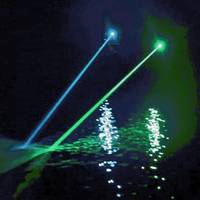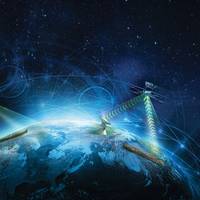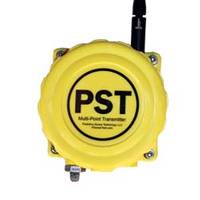Miros Group Names Aarset as New CEO

Wave measurement specialist Miros Group has hired Marius Five Aarset as its new CEO to lead the company as it looks to grow in renewable energy, oil and gas, offshore operations, and shipping markets.Marius Five Aarset has joined Miros from ABB, succeeding Andreas Brekke, who is taking on the role of CEO at the joint-venture Miros Mocean."With more than 25 years’ experience in digital and engineering-based roles, Mr. Aarset’s appointment follows nearly half a decade of senior leadership experience.
LADAR: Laser Sensor Technology for the Maritime Industry

Research scientist and entrepreneur Sverre Dokken believes laser-based remote sensing has big potential in the maritime domain. But what is LADAR, who’s it for and what are the key benefits?“Our mission is to be the world leader in innovative maritime sensor products that enhance the safety and security of shipping and all manner of offshore activity,” says Ladar Ltd (LDR) principal Sverre Dokken.In the sensor vanguardEssentially a laser-based navigational aid, LADAR (Laser Detection and Ranging) combines long-distance object detection with high-accuracy measurement…
Autonomy: The Vision of Autonomous Shipping

The end of 2018 provides an excellent opportunity to highlight some of the measures that have been taken by the maritime industry over the past year to develop a better understanding of autonomous shipping. A drive towards autonomous shipping has been embraced by many major players such as Rolls Royce and Wärtsilä, and this has led to numerous new strategies, visions, and projects that are pushing the boundaries of technological innovation. It’s no longer a matter of whether technology can achieve this next step…
Wireless Sensor Alerts Before Trouble Occurs

Predictive Sensor Technologies (PST), introduces its Wireless Environmental Temperature, Humidity and Dew point Sensor/Transmitter, (PST-THD) which, alerts the user via text or email when pre-set targets are reached. Operations which are sensitive to ambient conditions such as clean rooms, with sensitive electronics, commercial bakeries, food storage, transportation and processing and manufacturing of various powdered products have found that wireless condition monitoring from PST can help control critical parameters and eliminate surprise changes in conditions detrimental to the process.
New Kongsberg Sensor Factory, China
Kongsberg Maritime China Jiangsu (KMCJ), a new 2880m2 sensor production facility located in the Norwegian Industrial Park in Zhenjiang, Jiangsu province, China, was officially opened on Nov. 30 2009 during a traditional Chinese ceremony attended by over 150 guests. In February 2009, work started on the modern new sensor production facility, which is based on the same methodology and processes used at Kongsberg Maritime's Trondheim, Norway. "The establishment of KMCJ was an international effort, involving a number of people from different departments, from our sensor production facility in Trondheim and other Kongsberg Maritime sites," commented Håvard Johnsen, General Manager, KMCJ. "We currently have 15 employees, all of whom were hand-picked for their positions.
Lockheed Martin Awarded $35.8m Navy Contract
Lockheed Martin has been awarded a $35.8m contract by the U.S. Navy to design and produce antenna buoy systems that will expand the communications capabilities of submarines while they are submerged. The Navy's Communications at Speed and Depth (CSD) program will use expendable submarine and air-launched communications buoys to enable submarines operating below periscope depth and at tactical speeds to communicate with surface ships and land-based assets via satellite networks. All classes of U.S. Navy submarines will be equipped with this capability. Under the contract, a Lockheed Martin-led industry team will develop three types of expendable communications buoys: two submarine-launched tethered buoys that provide real-time chat…







